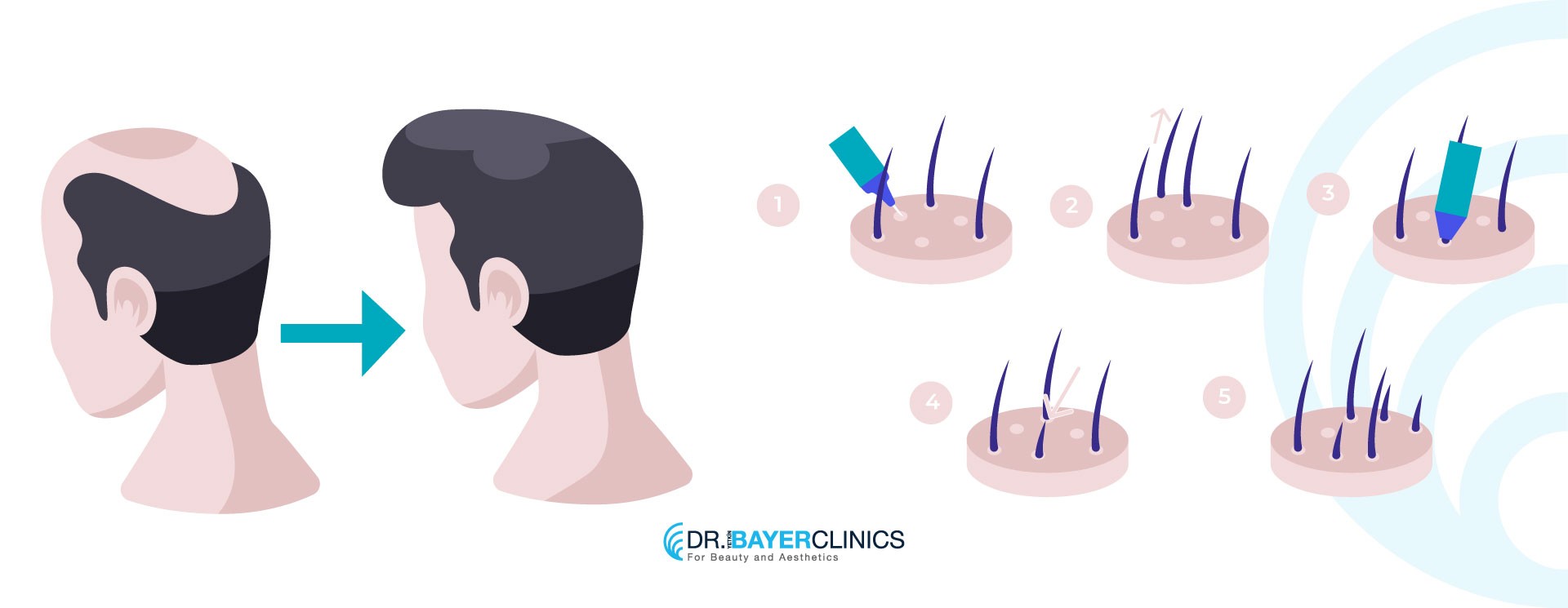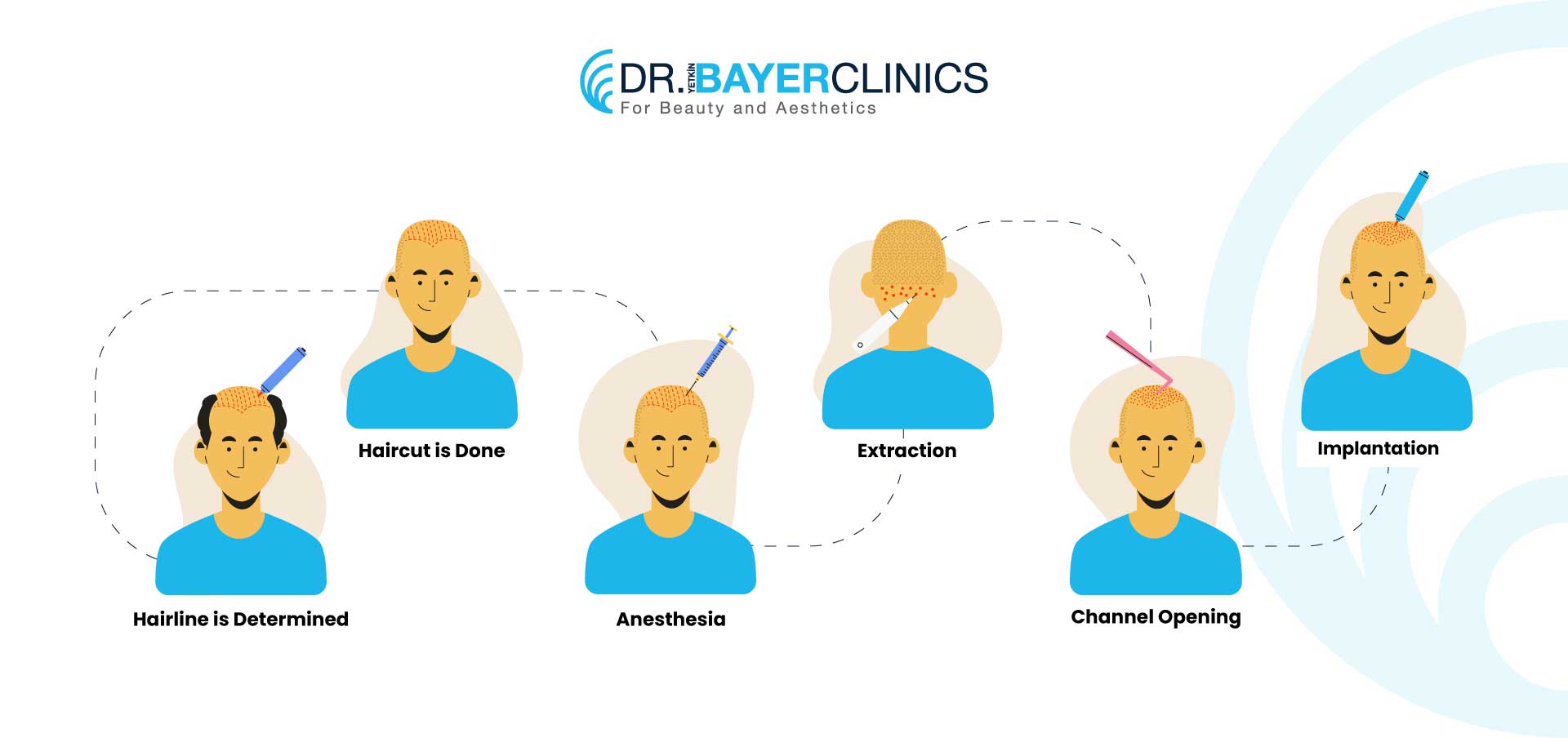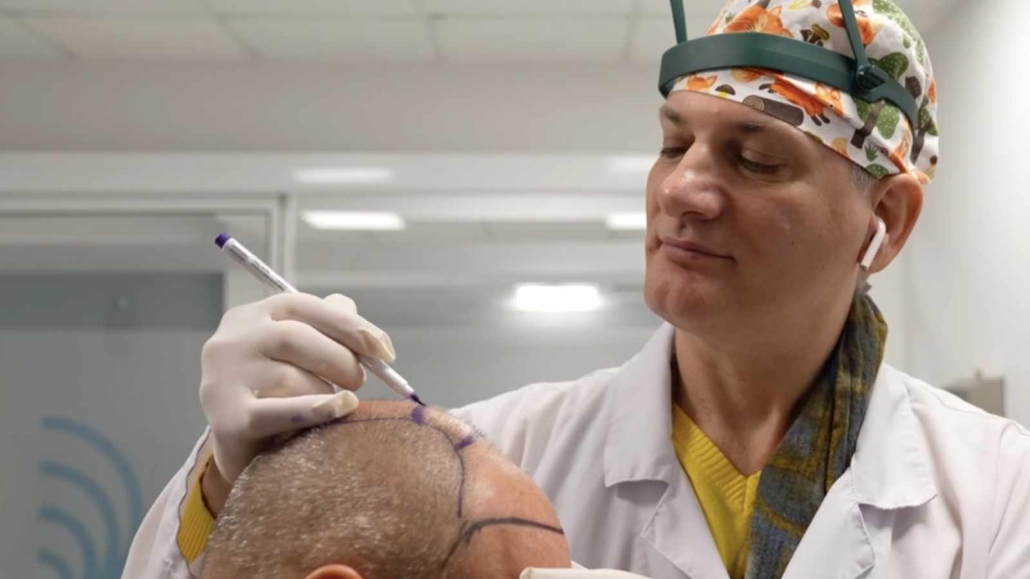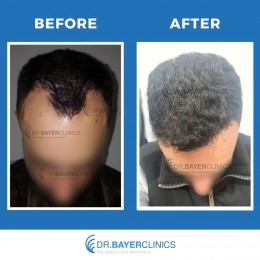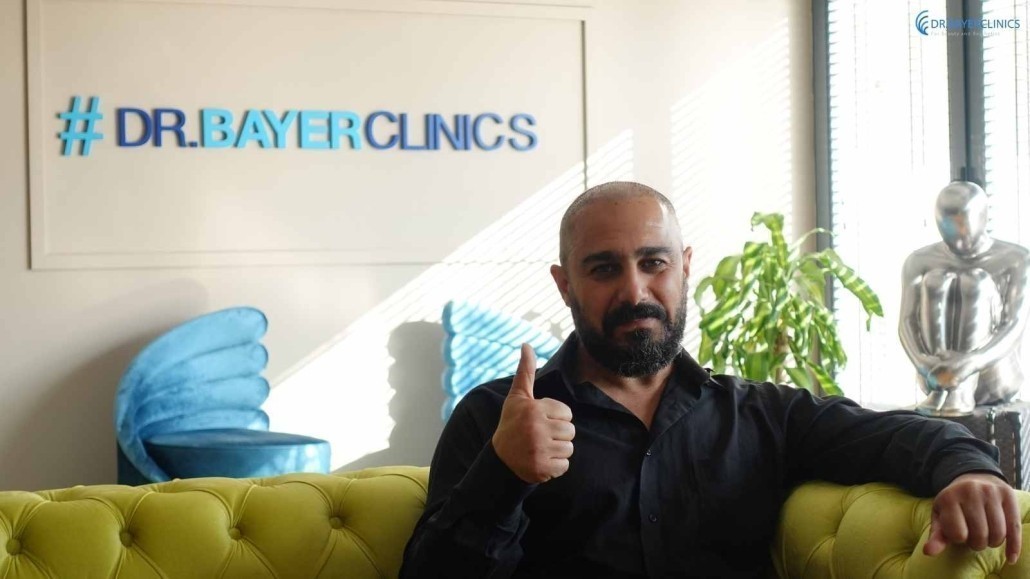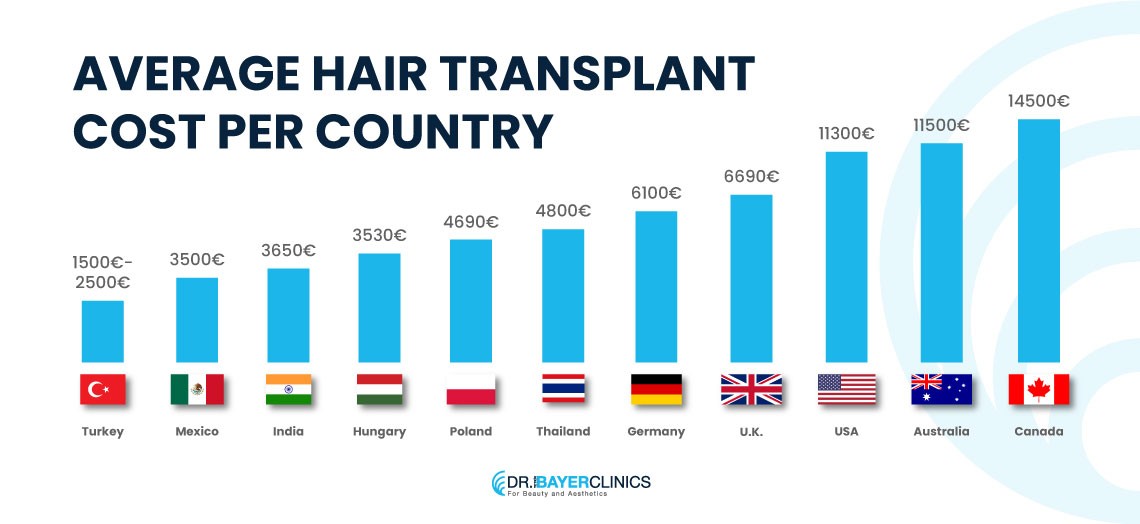FUE hair transplant in Turkey is a financially wise choice for patients from abroad because FUE hair transplant prices are cheap compared to other countries such as the USA and UK.
The average cost of FUE hair transplant in Turkey is 2550 USD, prices are depending on the number of grafts that the patient needs and clinics’ or doctors’ quality.
Getting the best FUE hair transplant results at affordable prices is possible in Turkey. Besides, you can have a chance to travel Istanbul while coming for hair transplant procedure. Places in Istanbul are very beautiful and worth seeing at least once in a lifetime!
Quick Facts
| Language | Turkish (Dr. Yetkin Bayer Clinics have native European speakers) |
| Visa | is not required for a trip of at least 30 days per visit |
| Time difference with Europe | 3 hours |
| Time difference with the USA | 8 hours |
| Capital | Ankara |
| Medical Tourism Centers | Istanbul, Izmır, Antalya |
| Popular Regions | Alanya, Kemer, Marmaris, Fethiye, Bodrum |
| Best period for the trip | February-September |
| Currency | Turkish Lira (EURO, USD, POUND are also accepted.) |
What is the FUE hair transplant?
Follicular unit extraction (FUE) also known as follicular transfer (FT), one of the primary methods in hair transplantation, was developed in the early 2000s replacing the previous technique, FUT (follicular unit transplantation). The FUE (Follicular Unit Extraction) is a cosmetic hair transplant microsurgery procedure.
Involves the extraction of single follicular units from usually the nape, the donor area, to be inserted in the open micro-channels in the receiving area. (the area with baldness).
The FUE (Follicular Unit Extraction) is a cosmetic hair transplant microsurgery procedure with minimal intervention, faster healing process, and scars absence
And so far has become the gold standard for hair transplantation, preferred by hair transplant doctors. And the best solution to all the hair loss problems.
How is the FUE hair transplant performed?
Hair transplantation with the FUE technique is a non-invasive cosmetic surgery intervention, divided into several parts. There will be explanations for each part separately to ensure you have detailed information.
But in a brief, simple explanation:
- The first part of hair transplant FUE is: composed of the analysis of the recipient and donor area, this is the shortest part of the hair transplant, It may require an hour, including; drawing the hairline and local anesthesia injection.
- Subsequently ensuring the anesthesia has taken effect. The doctor will move you to the next procedure of the FUE hair transplant.
- Which is the follicular extraction, or basically follicular hair or unit removal, And this is the part that differentiates FUE and the previous techniques.
- The last part will be grafting follicular units into the receiving area, these last two stages are the longer ones. Altogether it requires 4-7 hours.
Analyzing the reception area and donor area:
Each hair transplant patient has a unique situation that must be carefully analyzed by the doctor, and it would start by analyzing the patient’s medical situation first, moving along to analyzing how many follicular units to extract, how to position them, and how to draw the hairline. an expert doctor will know how to decide that.
Needing an expert doctor factor due to each patient has a different donor area and different receiving area: the amount of hair, the color, the duplicity, and the texture.
The analyzing producer not only affects the number of units taken but also the final result of the FUE hair transplantation, a correct analysis of the hair transplant area is one of the important phases.
This is also the right time for the patients to express any doubts with hairline drawing to the doctor, usually, as a hair transplant’s doctor proceeds to draw the patient’s hairline, it’s based on the aesthetic measurement and also a natural look, post hair transplant.
Who is a good candidate for FUE hair transplant?
Analyzing the patient’s medical situations, the history of hair loss, the patient’s needs and wishes will be just as important as previous analysis, to ensure a successful hair transplant.
Operating a patient unsuitable for hair transplantation can be dangerous. This will not only lead to producer failure but also put the patient at risk.
The main prerequisites for an ideal FUE candidate are :
- The cause of hair loss:
The patient who undergoes FUE hair transplant must not suffer from a temporary hair loss caused by (chemotherapy, stress, side effects of medicines, etc ) and only in case of permanent hair loss, the patient must be in good condition.
Mainly the types of permanent hair loss are male, androgenetic alopecia, trauma, and burns.
- Hair loss level :
Before carrying out an FUE transplant, the doctor must make sure that the hair loss is in an advanced state and not in progress. At some point in life, androgenetic alopecia tends to slow down or stop; this is the right time to perform the FUE transplant. if the intervention was performed before this period, the progressed alopecia would require a second intervention in the future.
- The donor area :
This area is the upper area of the neck (nape). This area is genetically not predisposed to hair loss. Meaning that the hair taken from this area and transplanted will not fall out. And this why The doctor must carefully analyze the donor area prior to FUE hair transplant to ensure, the donor area suitable and dense enough to undergo FUE transplant,
And removing hair from an unsuitable donor area will create problems for future intervention.
- Health status of the candidate:
Analyzing the health status of the patient is extremely important, which is why it’s the first procedure the patient undergoes & an FUE hair transplant. there are some pathologies that do not allow patients to undergo FUE, the main ones are
- HIV and AIDS and other blood diseases
- Pregnancy
- Hepatitis B and C
- Epilepsy
- In the event of disorders related to blood pressure or diabetes, the doctor will perform the transplant and the specialist doctor of the patient will have to be involved in strategies for a suitable hair transplant.
What Are the Risks and Side Effects of FUE Hair Transplant?
Individual follicular units are usually removed from the donor site, with no need for a horizontal cut, in the FUE method of acquiring follicular units. FUE hair transplantation is a very safe outpatient treatment with little risks or problems.
There are a few concerns with this type of cosmetic procedure, just as there are with any other procedure. When you make a visit to the clinic for your first face-to-face visit, these are normally described in depth.
Hair transplantation can result in certain mild transient difficulties or side effects. The following is a list of possible risks and side effects of a FUE Hair Transplant surgery:
- Discomfort
- Irritation
- Infections
- Hiccup
- Weakness
- Swelling
- Excessive loss of blood
- Lost grafts
Because an operation may have such a massive effect on someone’s lifestyle and well-being, it is critical to understand all of the risks associated before undergoing any procedure.
The factors influencing a successful FUE hair transplant:
The main factors of the analysis of the recipient and the donor area that are considered with the FUE technique transplant are.
- The donor area: the area from which follicular units will be withdrawn is very limited. This is very limited to a part in the optical area, the nape area, not subject to androgenetic alopecia. This ensures that the transplanted hair will not fall out in the future. Meaning using other areas subjected to alopecia therefore destined to hair fall, making the hair transplant a failure.
- Hair characteristics: Some important factors for an FUE transplant are hair duplication, color length, and shape (curly, smooth, wavy) darker and curly or thick hair will be able to create a greater fullness and volume than thin hair or light hair. In addition, the donor area could be naturally thicker and stronger and this helps to create more volume or fullness.
- Calculation of follicular units: most of hair transplant doctors, can estimate a good density with FUE technique, between 30 and 40 (follicular units) per cm, requiring extraction of 10/25 (follicular units) per cm,
These estimations are calculated on the basis of density 70 follicular/cm.
Based on these estimations, the reception area and the donor area will have the same density and natural look.
But these obviously are general guidance estimations, and if we consider the previous point: every patient is a case in itself.
- Type of session required: Based on the needs of the patient, his type of hair, the need for the recipient area or the availability of the donor area, the doctor will decide how to carry out the sessions.
- Normal FUE session: in the type of session they are extracted from 1000 to 2000 (follicular units).
- FUE megasession: the minimum number of follicular units is approximately around 3000 up to 4900 (follicular units) considered as the maximum follicular unit threshold that can be extracted in a single day.
Hair transplant anesthesia
The FUE is a non-invasive operation that requires local anesthesia, and the usage of general anesthesia is considered unnecessary and might lead to risks during the operation, and post hair transplant.
The use of local anesthesia allows the patient to remain awake during the hair transplant, but pain-free and the whole area is completely insensitive.
Local anesthesia administered in FUE through some injections into the scalp
And It requires 5 minutes with 4-8 injections.
The administration of anesthesia and the waiting for the effect would approximately take about 15-30 minutes.
If a patient suffers from a fear of needles or has a low pain threshold it would be possible to resort to it with the use of the jet, injector or sedation.
Do I have to receive anesthesia?
There are 3 types of anesthesia: local, regional and general.
In a hair transplant, the doctor administers local anesthesia and slight sedation used. This is enough for the patient to feel no pain and be at ease, while still conscious through the procedure, even able to consume food and be provided with other entertainment activities.
Though hair transplant involves minimal intervention, it is necessary to numb the scalp area, as quiet as big the area will be operated on, anesthesia is responsible for making hair transplant producer painless, and comforting for the patient
In conclusion, yes, you might have to receive local anesthesia. A lot of our patients are concerned that they may experience pain and discomfort during the surgery. However, you can rest assured that the doctors will try to make your experience in the clinic worry-free and comfortable.
Is hair transplantation with the FUE technique painful?
Of course one of the patient’s concerns would be, is hair transplant painful?
But we can ensure you, that the FUE hair transplant performed with local anesthesia
It is more than sufficient.
And throughout the process, the patient will be awake and conscious.
The only area that will experience numbness and pain-free is the head, where the intervention takes place.
Often some patients might think general anesthesia would be a better choice to be pain- free. and that’s highly unrecommended. Total anesthesia or general anesthesia carries a large number of risks and side effects.
Therefore the main medical method for pain-free hair transplantation in general and not just FUE hair transplant would be local anesthesia.
In the event the intervention is prolonged, the doctor can repeat the anesthesia.
And the only part of the FUE some patients find it painful or rather annoying is the anesthesia injection with a syringe into the scalp.
But if a patient has a low pain threshold or might be concerned by the needle.
We provide two solutions :
- Jet injector: the jet injector resembles a pen without a needle and allows a patient to feel less of a hassle of the real needle. injection or jet injection works by applying pressure allowing the anesthesia inserted in the area, with no needle usage.
However, this might not be sufficient for the duration of the whole operation, and second anesthesia will be necessary which will not be painful anyway, due to the jet injection.
- Sedative: in the case of patient frightened by needle or posses any phobia, the next solutions would the doctor administer a light sedative dose that allows the patient to fall asleep, therefore he doctor can continue with administering the local anesthesia, also it require the patient fasting for 10 hours before the operation ( the patient have to inform the doctor prior, so can be provided with the right instruction).
Follicular unit extraction :
The second part of the FUE hair transplant is the removal of follicular units. a follicular unit can consist of 1 to 5/6 hair. Of Course, this number varies from person to person,
Depending on their donor area and many other factors can go into it.
The follicular units are also composed of hair erector muscle, the sebaceous gland, the nerves and capillaries that nourish the follicular unit. And unlike FUT hair transplant, in the FUE doctor can decide where and which units follicles will be extracted,
In simple explanation: In FUE, to extract grafts, a surgeon will utilize a motor punch that is around 0.8 mm in diameter to harvest individual grafts separately. The punch creates an incision around the hair follicle allowing for it to be extracted via tweezers. The micro size of the punch does not leave behind any scarring or nerve damage as opposed to FUT.
The opening of canals :
Creating incisions, or opening of canals is an important phase and in fact this the phase where it can decide your post hair transplant look, meaning. opening the canals or incisions are responsible for the outcome of your density, positioning, and angle of the new hair.
For the procedure: This step is conducted by Using a blade or( variants other equipment), your surgeon will create incisions on the recipient site. Those incisions will host the new hair follicles to prepare the site for implantation. The number of incisions depends entirely on the number of grafts to be implanted.
In addition, this is the most delicate phase where an expert doctor will know how to create incisions, avoiding any damage to capillaries, veins or nerves.
The patient is advised to perform the hair transplant in clinics where this can be done by a doctor to allow an excellent result and reduction of any failure possibility in the hair transplant intervention and post hair transplantation, and not by a regular technician or nurse.
The three principles for opening channels:
Generally, three principles are considered for opening channels or creating the incisions, these three principles help the doctor decide how the incisions created to harvest the follicular units will be inserted.
These are :
- Density: density is a main factor in FUE both from a health point of view and from an aesthetic point of view and FUE hair transplant that allows greater density.
- Positioning: another main factor for grafting follicular units into the FUE distribution and positioning of the follicular units that harvested, an important part in this process is the disposition of the follicular units, it should never be positioned symmetrically, but a more of random placement will provide the natural look.
- Angle: the FUE hair transplant technique has the great advantage of being extremely natural. This naturalness is also made possible by the direction and angle of the grafts.
Grafting the follicular units :
The insertion of the follicular units requires great patience and precision from the doctor.
It will also be important to plan for the future and consider follicular density.
You can decide if you might be interested in having a higher density in the front hair, or forehead area. But also considering that this decision might affect having a lower density in the other areas.
But usually, this consideration is made based on how a person combs the hair or the hairstyle fits them. And this is precisely why the first FUE analysis phase is the main factor in your new look.
In a simple explanation: This procedure starts Once the recipient site is ready, grafts will be carefully inserted in the incision. Marking that, the end of the surgical procedure.
How long does a FUE hair transplant last?
Defining the exact duration of the hair transplant intervention is not that simple. On the other hand, the average FUE hair transplant can last from 5 to approximately 8 hours.
There are several factors can influence the duration of the transplant :
- Numbers of follicular units will be implanted
- Type of the patient’s scalp
- Experience of the doctor.
- If there are any complications.
And to provide estimations for each phase of the hair transplant ( average estimations)
- Anesthesia: 5-minute for the administering, 15-30 minute for the effect
- Channel opening: from 20 minutes to 1 hour.
- Removal and insertion of follicular units: 4 to 6 hours.
Post hair transplant hair regrowth period?
The post-FUE hair transplant period sees the patient wonder how the hair regrowth cycle of the transplanted hair starts. This regrowth cycle of the transplanted hair takes several months . and the patient must know what to do post hair transplant and what comes with post hair transplant FUE process :
- Starting from the 3rd month. you will notice mild growth with thin hair, that would be the first results of hair transplantation.
- Over the months, and especially from the 6th-12th month, the hair doubles up and appears thicker and this initiates the end of the regrowth cycle.
- After a year, you will notice the final result of the hair transplant and the completed new hair.
The techniques used in FUE hair transplantation:
Hair Transplant by FUE means the general technique for the hair removal or extracting follicular units, what comes after is implanting the extracted hair, of which there are several methods of performing this transplantation.
And these techniques, which modify the method of insertion of follicular units, presented as an even bigger innovation contributed to the FUE hair transplant.
In other words, these are modern tools and equipment used to implant or insert the follicular units in a more natural way.
The majority of these techniques are offered by clinics in Turkey. And that’s also why Turkey has become the ideal destination for hair transplant.
To analyze these, the developed FUE hair transplant techniques are currently Sapphire FUE and DHI Choi FUE :
Sapphire FUE :
- The Sapphire FUE follows the same procedure as the standard FUE hair transplant technique.
- The difference relies upon the equipment used and the butterfly effect this minor change initiates. Sapphire FUE uses blades made from the sapphire gemstone. So while this may seem like a trivial change, the use of sapphire to make the edge gravely impacts the structure.
- Sapphire blades have a V-shaped end in comparison to the U-shaped end in regular steel blades. As a result, the sharper end of sapphire allows surgeons to create more immaculate incisions.
- And With the increased level of precision in Sapphire FUE, there is no risk of damaging surrounding tissue. Moreover, healing rates are folds quicker
DHI Choi techniques :
DHI Choi FUE replicates every step of the FUE hair transplant technique excluding incision and implantation. In DHI, these last two steps are merged into one. This technique uses a pen-like needle that opens channels and simultaneously implants grafts.
Nurses usually load the pen with grafts where the surgeon will then use it to make incisions. Once the needle pin is inserted, the surgeon will load the grafts. This makes the process faster.
Dr. Yetkin Bayer a hair transplant clinic in Turkey with 23 years of experience, we have all the improved hair transplant techniques to give you the perfect hair resolution.
Fue Hair Transplant- Recovery Timeline
The recovery period begins shortly following the operation. Apart from FUT, this technique does not require the removal of skin slices and only gathers follicles from the donor site. As a result, you will be able to manage and go to work right away following the hair transplant.
The biggest worry, undoubtedly, is how long it might take for your hair to restore and when it will look healthy and normal once more. It is important to keep in mind that reducing harm or allergic reaction in this part of the body is critical during the recovery process. Every individual is unique, and there will always be some difference in new hair development. However, here is a standard overview of the outcomes you can anticipate at multiple levels.
Recovery Timeline After surgery:
- The pain, inflammation, bruising, and blister should disappear by the end of the first week, providing you with a classic shaved haircut on the head.
- The recently transplanted hair falls out 2 to 3 weeks following the FUE hair transplant. This is a usual procedure that you should not be terrified about. It is a routine component of the hair growth cycle. Even when there is baldness, the follicle continues to progress and goes back to the development stage in a matter of weeks.
- The person with FUE probably looks very similar to his or her situation 2 to 3 months ago, which is also common. You will persist in carefully applying all following treatment guidelines and schedule follow-up appointments with your surgeon.
- After 4 months, you should notice hair growth from the implanted hair shaft. Even so, because restorative time and progress can differ, new hair development occurs sooner in certain patients. At this point, fresh regrowth can be fragile and slim, indicating that FUE will not produce long-term outcomes.
- Through the ninth month, your hair will be much denser and longer, allowing you to model it anyway you want. As is advisable, schedule a follow-up meeting with the surgeon.
- The transplant operation will be almost finished in terms of development, depth, and volume after a year of surgical procedure. At this moment, the majority of your hair follicles can produce healthy hair.
What to expect after a FUE Hair Transplant ?
After a FUE hair transplant, you need to dedicate yourself to take care of your scalp and hair. Your surgeon and assistants will go over all of it with you all in greater depth, and here are several aftercare guidelines that are likely to be given to you:
- For at least three days, refrain from washing your hair or taking a bath.
- When you begin washing your head, use soft, unflavored skincare products for several weeks.
- Take a few days off job to aid in the recovery process.
- For at least three weeks, don’t brush or scrub your new hair.
- Use caps, hoodies, or other head coverings only if your doctor has given you the all-clear.
- For at least a week, refrain from engaging in any intense exercise.
Why do patients choose Turkey for FUE hair transplant?
Turkey, located at the intersection of Asia and Europe, is ideal for potential FUE hair transplant patients from all over the world, and there are explanations for it being the most popular location for FUE hair transplant operations.
The major reason for patients to choose Turkey for their FUE transplants is due to the cheapness of hair transplant expenses. These cheap prices can be attributed to the fairly low cost of life and employment. In addition, Turkey has put a lot of effort into modernizing its medical system, ensuring that its healthcare centers meet or even exceed global norms. So, once you select Turkey as your FUE hair transplant location, you’ll have access to the most cutting-edge FUE technology and methods.
Lastly, the surgeons in Turkey are educated in the best way and have worked with international patients for years; therefore, they will understand what you need completely, and your process will be safe.
How Much Does FUE Hair Transplant Cost in Turkey?
The cost varies greatly depending on how much hair is transplanted and how skillful your surgeon is. Hair transplants range in price from $4,000 to $15,000 each session.
Here are some prominent countries and their prices that you may consider getting your FUE hair transplant surgery;
USA: The cost of a FUE hair transplant in the United States ranges from $4000 to $15000, depending on your needs. If extra operations are required, you may be charged an additional fee.
USA: The cost of a FUE hair transplant operation in Spain is roughly 5200 Euros, although this estimate is based on the doctor’s expertise, clinic, and so on.
The Netherlands: If you chose the Netherlands for a FUE hair transplant, you should be ready to pay roughly $6000.
France: In France, you will be able to get the transplantation procedure for $9000.
UK: In the United Kingdom, clinics do this operation for 5300 Euros on average.
Germany: When it comes to Germany, you should have at least $4735 in your pocket.
All inclusive FUE hair transplant package:
- Accommodation (3 nights stay in a 4-star hotel)
- VIP transfers (Private car. From the hospital to the hotel, then to the hospital, and back)
- Translator service if needed
- Painless Local Anesthesia
- MicroFUE maximum density pre-operation haircut
- PRP Treatment Medications
- Post-operative care essentials, such as shampoo, lotion, special hat, neck pillow, pain killers, aspirin, antibiotics, etc.
- PRP therapy to stimulate better hair growth.
FUE Hair Transplant Before and After Photos
FAQ
Is FUE hair transplant permanent and worth it?
FUE hair transplantation is a long-term solution for hair loss. When new hair keeps growing, it will not come out afterwards; the transferred hair keeps growing properly. Individuals are urged to begin supporting good care following the transplant is completed to help them recuperate and develop strong hair.
FUE hair transplants are definitely worth it if you don’t have any financial problems as results are lasting.
Is FUE hair transplant painful?
It could be a little unpleasant initially, since the anesthetic administrations into the supplier and receiver sites are the only substantial source of pain. But when the spot is totally paralyzed, there will be no ache. After the surgery, Certain people will only have moderate discomfort for several days, while others will have a sensitive head for about 14 days.
What is the success rate of FUE hair transplant surgery?
FUE hair transplantation has a performance level of 95 to 100 percent. It’s important to mention that the predicted degree of achievement is dependent on the hair transplant surgeon and the health professionals executing the surgery being trained and knowledgeable. Patients should be aware that a FUE treatment may necessitate numerous procedures to get a better effectiveness percentage and satisfactory hair transplant outcomes.
Is FUE hair transplant safe?
The FUE surgery is reported to be harmless, with mild side effects such as small white marks where units were removed. You may encounter brief adverse effects that subside after several days, but they are totally common. Inflammation, loss of blood, and soreness of the head are all frequent health risks of FUE hair transplant surgery.
Does FUE hair transplant leave scars?
Individual follicles will be taken from the donor site on the rear and sides of your scalp throughout the procedure. As a consequence, the donor site from which a hair follicle was taken will have very little wounds. When the hair reaches a certain length, these will be
Reference:
https://www.healthline.com/health/cosmetic-surgery/everything-to-know-about-a-fue-hair-transplant

